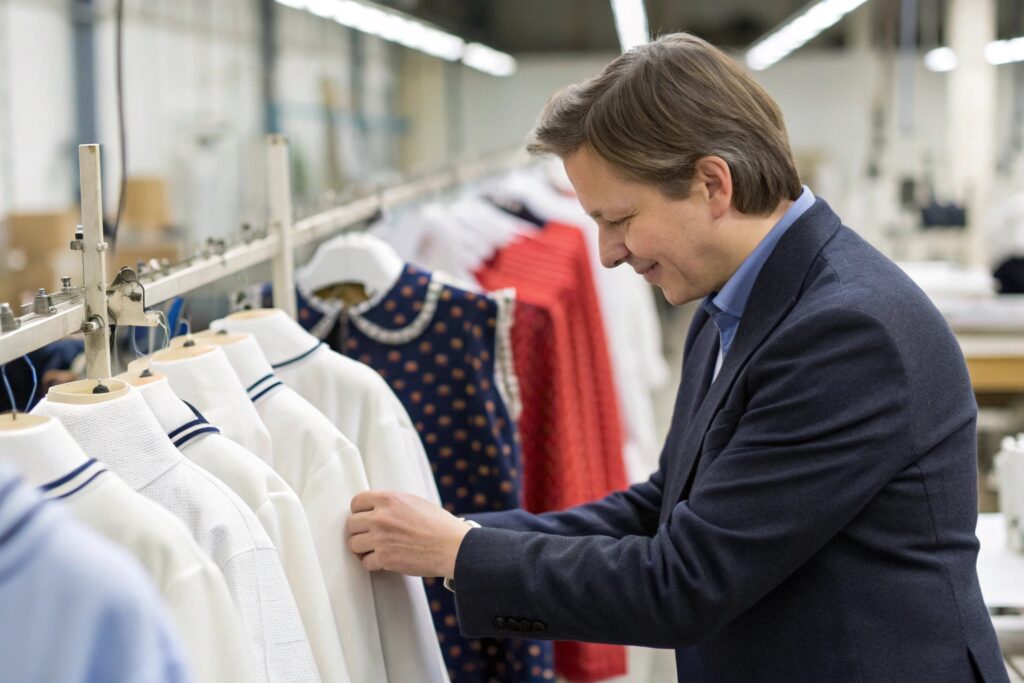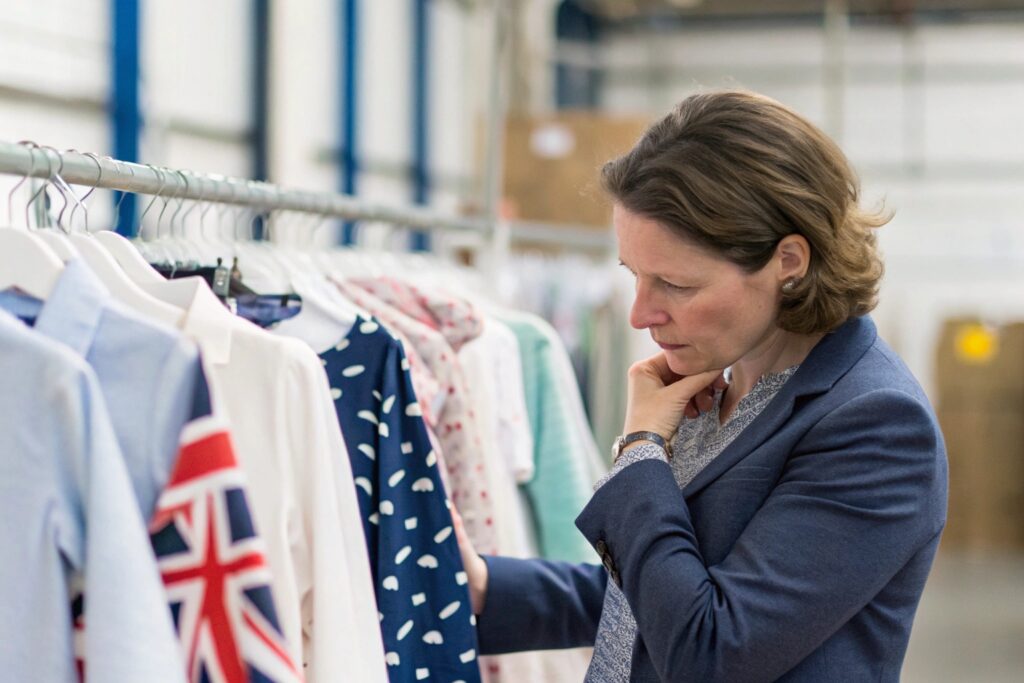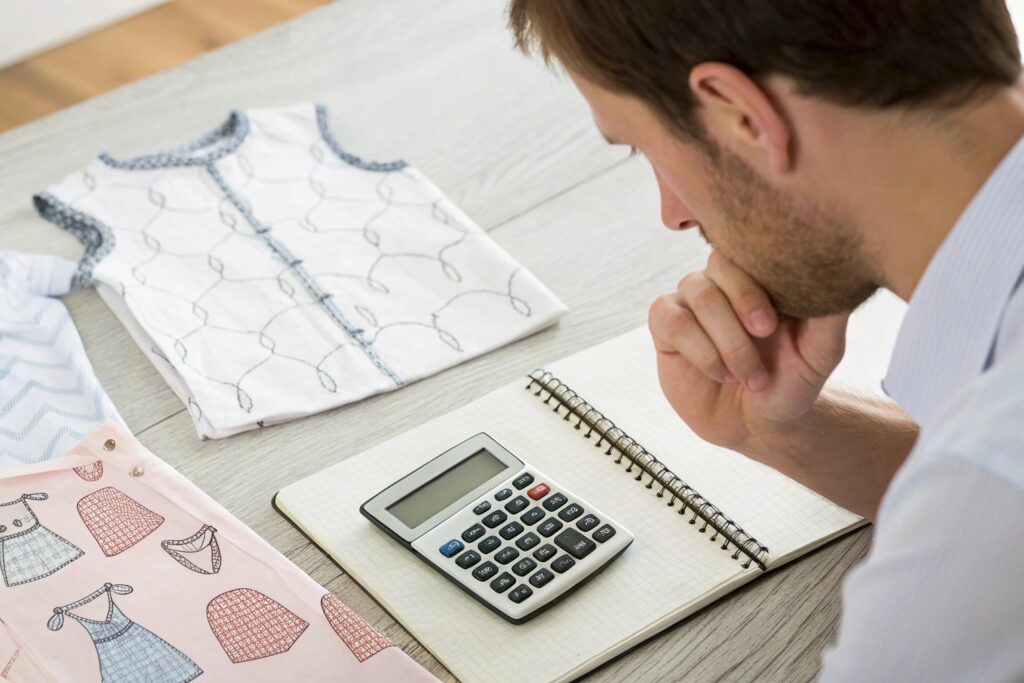Many fashion brands want to produce high-quality clothes, but finding reliable manufacturers is hard. UK production sounds appealing, but is it worth it?
Yes, there are good quality clothing manufacturers in Britain, but most of them are small-scale, high-cost, and focused on luxury or niche segments. For scalable, affordable production, countries like China remain more competitive.
If you’re considering sourcing in the UK, this article will help you weigh your options. I’ll also compare UK clothing factories with global ones based on quality, cost, and convenience.
Are any clothes manufactured in the UK?
Many people think the UK has no clothing factories left. But is that really true?
Yes, some clothes are still made in the UK. However, most British garment factories are small, cater to high-end clients, and can’t compete with overseas pricing.

Why are most UK factories focused on small-batch or niche clothing today?
The UK used to be a major clothing producer, especially in cities like Manchester, Leicester, and London. But over the past few decades, most production moved overseas due to lower labor costs. What’s left today are smaller workshops, often family-run, that offer craftsmanship over scale.
These small British factories now specialize in:
- Designer collaborations
- Sustainable fashion lines
- Tailored or bespoke items
- Short runs for new brands
Here’s a comparison of UK vs. overseas manufacturers:
| Feature | UK Manufacturers | Overseas (e.g., China) |
|---|---|---|
| MOQ (Minimum Order) | Low (50–200 pieces) | Medium to High (300+) |
| Production Speed | Moderate | Fast (with capacity) |
| Cost per Unit | High | Low |
| Certification Support | Limited | Comprehensive (OEKO-TEX, BSCI) |
| Logistics Convenience | Easy for local delivery | DDP options available |
For many fashion brands, UK manufacturing offers prestige and proximity. But it's not ideal for mass-market or budget-friendly collections.
What types of clothes are still made in Britain?
British factories tend to produce garments that require skilled sewing or special fabrics. Examples include:
- Wool coats and blazers
- High-end dresses
- Organic babywear
- Luxury sleepwear
- Tailored uniforms
Some small UK brands make a point of advertising "Made in Britain" as a selling feature. But behind the scenes, even they may source fabrics or trims from abroad. That’s why many buyers choose hybrid strategies—design locally, manufacture globally.
Which country is best for clothing manufacturing?
Global buyers like me always ask—who’s the best when it comes to quality, price, and efficiency?
There’s no single “best” country. China leads in full-package service and scalability, while Bangladesh and Vietnam offer lower costs. The UK excels in craftsmanship but lacks affordability.

What factors determine which country is best for your brand?
When I source clothing for my business, I look at more than just cost. Here’s what I compare:
- Quality assurance systems
- Factory compliance and certifications
- MOQ flexibility
- Lead times
- Material sourcing
- Support for customization
- Delivery options and reliability
Here’s a breakdown by region:
| Country | Strengths | Weaknesses |
|---|---|---|
| China | High quality, fast turnaround, DDP, tech | Slightly higher labor cost than peers |
| Vietnam | Stable quality, ethical production | Smaller capacity, fewer fabric options |
| India | Great for cotton, embroidery | Delays due to local logistics |
| Bangladesh | Cheapest prices, huge capacity | Needs close QC monitoring |
| UK | Premium branding, short shipping | Very high unit cost, limited fabric choices |
In my experience, China works best for most ready-to-wear kidswear. It offers competitive prices, advanced equipment, and full logistics support. UK factories are great for boutique lines, but not for volume production.
Why is China still a top choice despite rising labor costs?
Chinese clothing factories have made major upgrades. Many now use semi-automated sewing systems. They offer 3D sampling, live video inspections, and DDP (Delivered Duty Paid) logistics. That saves us weeks in communication.
Also, I can get custom packaging, woven labels, and rare styles—all under one roof.
That efficiency gives me room to focus on design and marketing, instead of chasing shipping documents or fabric delays.
Where to buy good quality clothes in the UK online?
If I want to buy from UK suppliers online, what are my options?
You can buy from UK-based manufacturers, boutique brands, and curated B2B platforms. However, online options are often limited to small quantities and higher prices.

Why is buying wholesale UK-made clothes online still tricky?
Unlike suppliers in Asia, many UK manufacturers don’t have user-friendly websites or full online catalogs. You’ll need to email them, request quotes, and sometimes visit in person.
Some good places to explore include:
- Make It British Directory
- UKFT member factories
- Not Just A Label (for designer-level clothing)
- Faire (select UK-based sellers)
But remember: many of these are geared toward boutiques or startup labels. If your brand needs 10,000 pieces per month, UK suppliers may not be the right match.
How do UK online platforms compare with global sourcing sites?
Here’s a table to show the main differences:
| Platform | MOQ | Focus Area | Notes |
|---|---|---|---|
| Make It British | Low | UK factories | Focuses on domestic producers |
| Faire | Very low | Boutique brands | Mostly finished goods |
| Alibaba | Medium-High | Global manufacturers | Best for private label sourcing |
| Global Sources | Medium | Verified Asian suppliers | Good for competitive pricing |
| Tradeshows | Custom | Direct factory contact | Best for building long-term partners |
If your goal is to scale, I’d suggest using the UK for sampling or capsule collections, while keeping production offshore.
How much does it cost to manufacture clothes in the UK?
Many new brands assume UK production means better margins. But what’s the actual cost?
Producing clothes in the UK costs around 5 to 10 times more than in Asia. Labor, rent, and compliance all drive up prices.

What makes UK clothing manufacturing so expensive?
The cost of making a garment includes:
- Labor (minimum wage in the UK is over £10/hour)
- Workshop rent and utilities
- Taxes, insurance, compliance
- Small production runs (higher per-unit cost)
- Fabric and trims (often imported)
Here’s an example comparison for a simple cotton baby romper:
| Item | UK Factory Cost | China Factory Cost |
|---|---|---|
| Labor | £4.50 | £0.80 |
| Fabric (imported) | £3.00 | £2.00 |
| Cutting and sewing | £3.00 | £0.50 |
| Labels and packaging | £1.00 | £0.30 |
| Total (per piece) | £11.50 | £3.60 |
Even when adding shipping from Asia, the China-based item is still far more affordable.
Can UK production be worth it in any case?
Yes, in specific cases like:
- Luxury babywear with a “Made in Britain” label
- Sustainable capsule lines
- Urgent restocks for UK-based e-commerce
- Small drops with no customs delay
But for mass production? The cost just doesn’t work. That’s why I rely on my trusted Chinese factory. We’ve built systems to avoid delays, use real certificates, and ship DDP.
Conclusion
The UK has skilled garment makers, but they serve niche needs. For quality at scale, global buyers like me still rely on trusted overseas manufacturers like Fumao Clothing in China.










